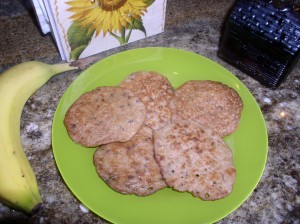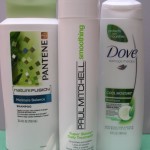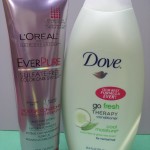
What comes to mind when you hear the phrase “comfort food”? For me, it’s something warm and soothing–a bowl of homemade soup, perhaps. I also find nutty and grainy foods comforting: chunky peanut butter on a slice of whole-grain bread can cheer me up big time. This is the season for comfort food: tender turkey teamed with gravy, crispy stuffing infused with chestnuts and mushrooms, smooth pies and puddings. Ding! The Yum Meter just shot up to 11!
I sometimes use the image of “comfort food” to describe yoga, particularly the restorative practice I offer privately and on Sunday mornings (and some Wednesday evenings) at Yoga Haven in Tuckahoe. Restorative yoga is reward without effort: with the help of sturdy bolsters and rolled-up blankets, we place ourselves in nurturing asana, then receive the benefits of the poses without expending muscular effort. Definitely high on the Yum Meter, and calorie-free to boot!
Some effort is required, however, to get a home-cooked, healing meal. I’ve never made a turkey, but I can share an easy recipe for a delicious and nutritious breakfast dish that will warm your tummy on a chilly morning.
I adapted the following recipe for oatmeal pancakes from one clipped from a book about 20 years ago. Soluble fiber, which is found in oat bran, oatmeal, and oat flour (oat bran has the highest soluble fiber content of the three), is a cholesterol-lowering champ, and these petite pancakes, with their tasty and textured oatmeal filling, pack a fiber punch.
A sprinkling of flaxseed adds an extra fiber boost. While I’ve only made the pancakes with whole seeds (I like the crunch) grinding the seeds first may be a better choice: several articles I’ve read note that whole flaxseed can pass through our system undigested, taking their benefits with them. Another option: substitute flax meal for the seeds.
Although my son grumbles when he’s served oatmeal cereal, he downs these pancakes with gusto. I love watching him enjoy a healthy meal, especially one that offers, to put it delicately, elimination-enhancing properties. So the next time you’re in the mood for comfort food, vote for oats–your body will thank you!
Oatmeal Fiber Pancakes
- 3/4 cup cooked Old Fashioned oats (not the cooks-in-minute processed kind)
- 3/4 cup oat flour (spelt flour also works really well)
- 1 tsp baking powder
- 1 tbsp flaxseed (see above note re: flax meal)
- 1 tsp cinnamon (or to taste)
- 1/4 tsp nutmeg
- 1 1/4 to 1 1/2 cup water
- 1 egg
- 2 tbsp pressed oil
Cook oatmeal and set aside to cool.
In a large bowl, mix eggs and oil.
Add dry ingredients, one at a time; mix well.
Add water to moisten ingredients, but don’t let batter get runny.
Add oatmeal and mix well; add more water if needed.
Spoon small amounts of batter into greased frying pan (or use griddle)
Cook until golden and firm.
Makes about 20 small-size pancakes.





 When you shampoo your hair, one lathering is enough. (The first lathering gets your hair clean; a second will strip your hair of its essential oils.) When you are done shampooing, be sure to rinse the hair well to ensure that no residue of shampoo is left behind. Any residue left in the hair will eventually leave your hair dull and flat.
When you shampoo your hair, one lathering is enough. (The first lathering gets your hair clean; a second will strip your hair of its essential oils.) When you are done shampooing, be sure to rinse the hair well to ensure that no residue of shampoo is left behind. Any residue left in the hair will eventually leave your hair dull and flat. There are some good commercial brands available, however, including products from L’ORÈAL, Pantene, Dove, and Paul Mitchell. The Paul Mitchell brand was a professional product for many years, and the company has managed to maintain the professional quality in its products even at the lower price point. You can usually find Paul Mitchell products and other good commercial brands at your local CVS, Duane Read, and Harmon stores.
There are some good commercial brands available, however, including products from L’ORÈAL, Pantene, Dove, and Paul Mitchell. The Paul Mitchell brand was a professional product for many years, and the company has managed to maintain the professional quality in its products even at the lower price point. You can usually find Paul Mitchell products and other good commercial brands at your local CVS, Duane Read, and Harmon stores. time you shampoo and still find that your hair has little volume, it may be due to the conditioner. So if your hair tends to fall limply over your head, skip the conditioner and see if that makes a difference.
time you shampoo and still find that your hair has little volume, it may be due to the conditioner. So if your hair tends to fall limply over your head, skip the conditioner and see if that makes a difference.